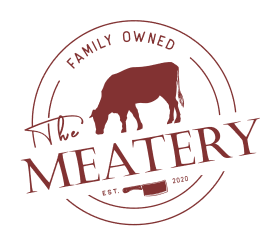Wagyu Breeds And Origins
Wagyu, which literally translates to "Japanese cow," encompasses several breeds of cattle native to Japan. The four main Wagyu breeds are Japanese Black (Kuroge), Japanese Brown (Akage), Japanese Shorthorn (Nihon Tankaku), and Japanese Polled (Mukaku). Among these, the Japanese Black is the most renowned and accounts for about 90% of all Wagyu beef production.
The history of Wagyu dates back to the 2nd century when cattle were first introduced to Japan. These animals were primarily used as draft animals in agriculture, which contributed to their unique genetic development. The isolated nature of Japan's islands and strict breeding programs have helped maintain the purity of these bloodlines for centuries.
What makes Wagyu truly special is its genetic predisposition to create intense marbling (intramuscular fat). This characteristic developed as an adaptation to Japan's mountainous terrain, where cattle needed extra energy reserves to work and survive. The most famous regional varieties include Kobe, Matsusaka, and Ohmi beef, each coming from specific areas and breeding programs in Japan.
Wagyu Import Regulations
The international trade of Wagyu beef and genetics is strictly regulated, particularly by the Japanese government. Japan considers its Wagyu cattle a national treasure and maintains tight control over their export. Until 1997, Japan banned all exports of Wagyu cattle, making it extremely difficult for other countries to establish their own Wagyu herds.
Today, while live cattle exports are still heavily restricted, some genetic material and beef products can be exported under specific conditions. Countries like Australia and the United States have developed their own Wagyu breeding programs using genetics from Japanese cattle exported before the ban. However, authentic A5 Wagyu can only come from Japan, where it must meet strict regulatory requirements:
- The cattle must be born and raised in Japan
- They must be pure-bred Wagyu with certified lineage
- All processing must occur in Japan under strict guidelines
- Export documentation must be complete and verifiable
How To Spot Fake Wagyu
With the premium prices that A5 Wagyu commands, it's unfortunately common to encounter misrepresented or fraudulent products. Here are several key indicators to authenticate genuine Wagyu:
- Certificate of Authenticity: Genuine Japanese A5 Wagyu comes with a tracking number and certificate
- Marbling Pattern: Authentic Wagyu has a distinctive snowflake-like marbling pattern
- Price Point: Real A5 Wagyu typically costs $200-400 per pound
- Source Verification: Legitimate retailers can provide documentation of their Japanese import chain
Be particularly wary of restaurants or retailers offering "Wagyu" at suspiciously low prices. Genuine A5 Wagyu should have visible documentation of its Japanese origin and grade. The meat should also have an extremely dense, fine marbling pattern that's distinctly different from regular prime beef.
Wagyu Grading System
The Japanese Wagyu grading system is exceptionally rigorous and consists of two main components. The letter (A-C) represents yield grade, while the number (1-5) indicates meat quality. A5 represents the highest possible grade, combining the highest yield (A) with the highest quality score (5).
The quality grade evaluates four criteria:
- Marbling Score (BMS: 1-12)
- Meat Color and Brightness (BCS: 1-7)
- Firmness and Texture (1-5)
- Fat Color and Quality (BFS: 1-7)
For beef to qualify as A5, it must score exceptionally well in all categories, with a minimum BMS of 8. This comprehensive system ensures that only the absolute finest beef earns the coveted A5 designation.
Is A5 Wagyu too rich?
The extraordinary richness of A5 Wagyu is both its greatest attribute and potential limitation. Due to its extremely high fat content (up to 50% intramuscular fat), many people find they can only enjoy small portions of A5 Wagyu at a time. The intense buttery flavor and melt-in-your-mouth texture can be overwhelming for those accustomed to traditional steaks.
Culinary experts typically recommend serving A5 Wagyu in portions of 3-4 ounces per person, significantly smaller than traditional steak portions. The rich flavor profile means that even these small portions can provide a completely satisfying dining experience. Many high-end restaurants serve A5 Wagyu as part of a tasting menu rather than a main course.
For first-time Wagyu consumers, it's advisable to start with smaller portions and possibly consider sharing the experience with others. This approach not only makes the premium price more manageable but also prevents potential palate fatigue from the intense richness.
Why is Wagyu so expensive?
The exceptional cost of A5 Wagyu reflects a combination of factors in its production and distribution. The primary reasons include:
- Breeding and Raising Costs: Wagyu cattle require specialized care and feeding for 2-3 years
- Limited Supply: Only a small percentage of Japanese Wagyu achieves A5 grade
- Strict Regulations: Complex export requirements and limited availability outside Japan
- Production Methods: Labor-intensive care including daily massage and strict dietary control
Additionally, each cow produces a relatively small amount of A5-grade meat, and the complex international shipping requirements for fresh beef further increase costs. The result is a premium product that often retails for $200-400 per pound in international markets.
Is A5 Wagyu worth it?
The value proposition of A5 Wagyu ultimately depends on individual preferences and circumstances. From a culinary perspective, it offers an unparalleled dining experience with its extraordinary marbling, texture, and flavor profile that no other beef can match. For food enthusiasts and those seeking exceptional culinary experiences, A5 Wagyu represents the pinnacle of beef quality.
However, the significant cost means that A5 Wagyu should be viewed as a special occasion indulgence rather than a regular dining option. Consider these factors when deciding:
- Special occasion value and memorable dining experience
- Understanding of proper preparation methods
- Appreciation for intense beef flavors and rich textures
- Financial comfort with premium pricing
For those who appreciate fine dining and have the means, experiencing genuine A5 Wagyu at least once is highly recommended. It represents not just a meal, but a unique culinary adventure that showcases the heights of what beef can achieve.









